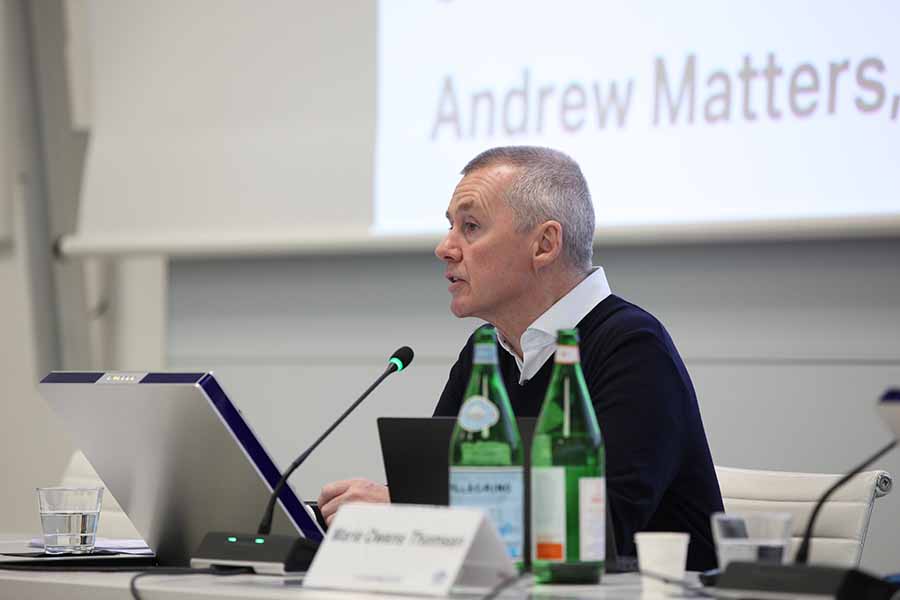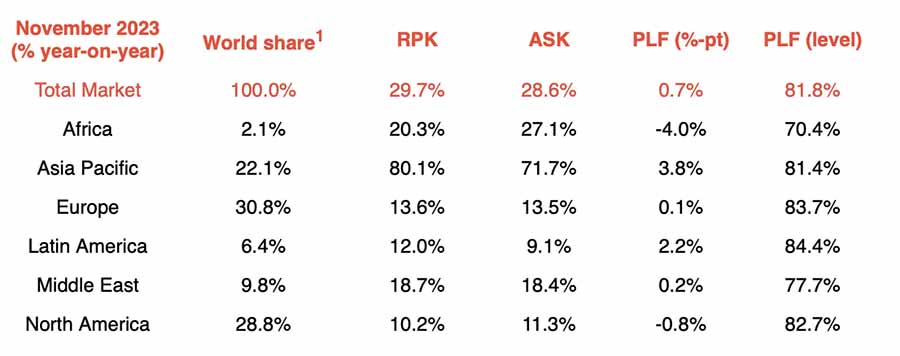
Air travel demand in November 2023 reached 99.1pc of November 2019 levels, according to data released by the International Air Transport Association (IATA).
Total traffic in November 2023 increased by 29.7pc compared to November 2022, with international traffic rising by 26.4pc.
The Asia-Pacific region reported the strongest year-over-year results, with a growth of 63.8pc, and international revenue passenger kilometers (RPKs) reached 94.5pc of November 2019 levels.
Domestic traffic in November 2023 was up by 34.8pc compared to November 2022, with China experiencing significant growth (+272pc) and the US reaching a new high with a 9.1pc expansion over November 2019.
In Europe November traffic climbed 14.8pc versus November 2022. Capacity increased 15.2pc, and load factor declined 0.3 percentage points to 83.3pc.
The Glansevin born CEO of IATA, Willie Walsh said: “Aviation’s rapid recovery from COVID demonstrates just how important flying is to people and to businesses. In parallel to aviation’s recovery, governments recognized the urgency of transitioning from jet fuel to Sustainable Aviation Fuel (SAF) for aviation’s decarbonization.
The Third Conference on Aviation Alternative Fuels (CAAF/3) in November saw governments agree that we should see 5pc carbon savings by 2030 from SAF. This was followed up at COP28 in December where governments agreed that we need a broad transition from fossil fuels to avoid the worst effects of climate change.
Airlines don’t need convincing. They agreed to achieve net zero carbon emissions by 2050 and every drop of SAF ever made in that effort has been bought and used. There simply is not enough SAF being produced. So we look to 2024 to be the year when governments follow-up on their own declarations and finally deliver comprehensive policy measures to incentivize the rapid scaling-up of SAF production.”




